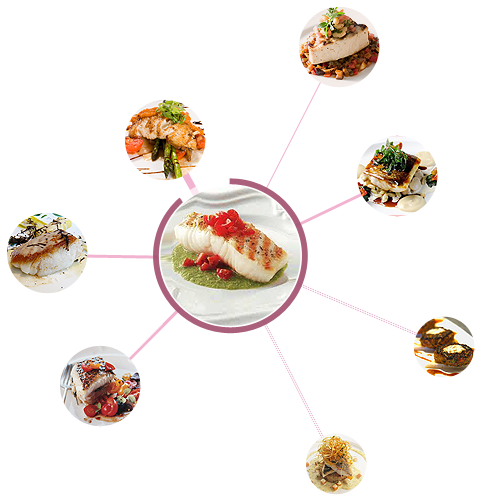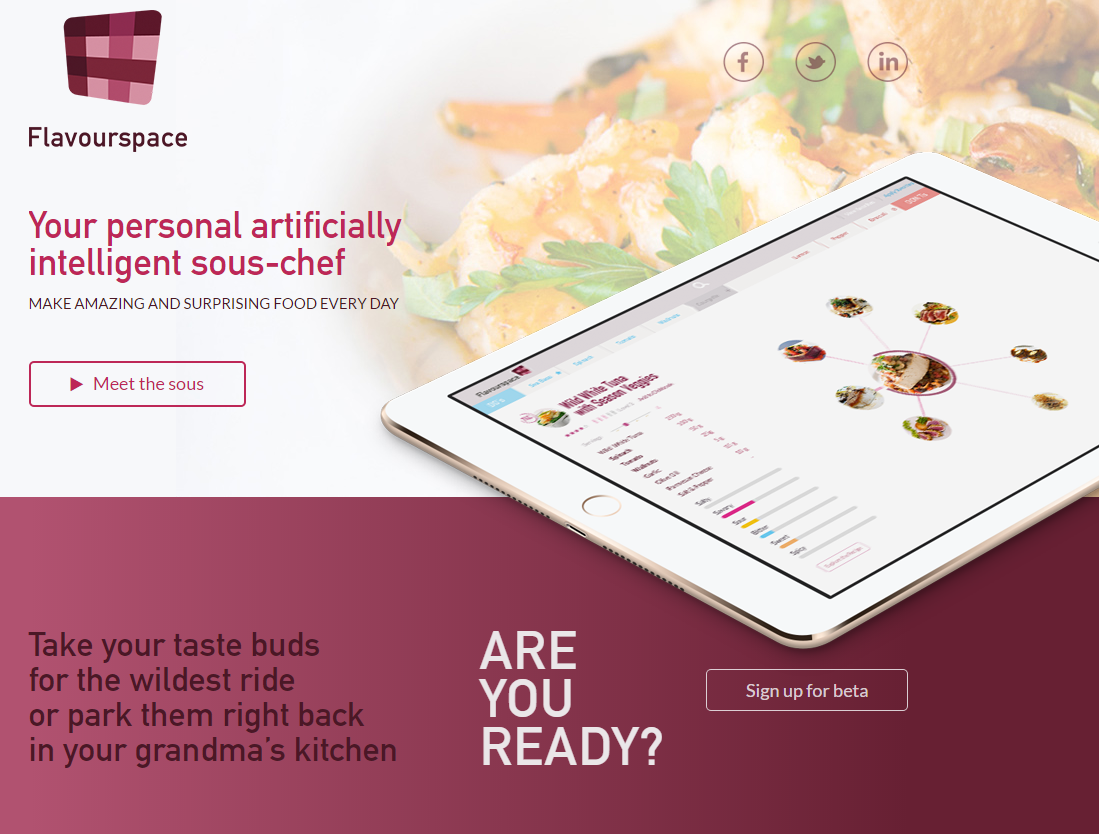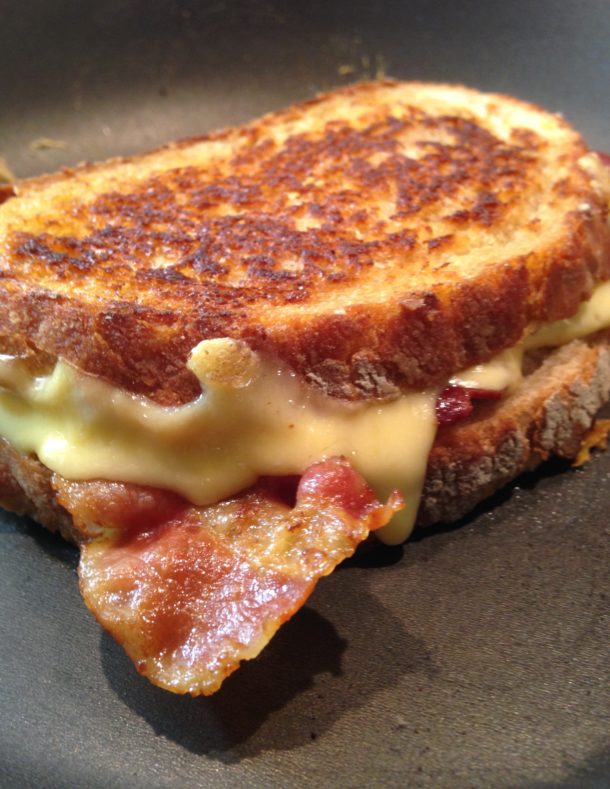Big Data Analytics and Food
There are many interesting things happening in the world of Food and Technology including the application of Big Data Analytics to how we eat or could eat in the future. To get a better understanding of this tech, The Culinary Exchange was pleased to interview Vladimir Nedovic from Flavourspace to learn more about how big data analytics will be shaping how we eat and get dinner on the table. Vladimir was kind enough to introduce us to the Flavourspace platform and the power of their Virtual Sous-Chef. The interview is below.
What is Flavourspace.com?
Flavourspace develops state-of-the-art digital technologies that empower people to further develop their relationship with food. As the first step on that mission, we have created a food discovery engine in which recipes are adjustable by user preferences and foods (dishes as well as ingredients) are connected based on taste similarity. So we first ran intelligent algorithms on hundreds of thousands of recipes and their properties (i.e. ingredients, cuisine types, nutritional values, etc.). Algorithms analyzed combinations of properties in different cuisines and looked at foods people were typically putting together, in order to learn sensible pairings. The result is an artificially intelligent sous-chef that people can rely on during food preparation: they can create dishes based on foods they like while the sous-chef suggests best ingredients to add, validates pairings, provides ingredient substitutions, and so on.
In Flavourspace, we differentiate between recipes and dishes – whereas recipes are formulas for preparing a very specific dish (e.g. your grandma’s version of Strawberry Pavlova), dishes are the actual result of cooking, with their own ingredients, flavors and aromas. These dishes are often the result of improvisation. They change depending on the chef and stuff available at hand, with the only goal that they taste good in the end. Using advanced technologies, Flavourspace wants to facilitate recipe adaptation and improvisation so people can end up with dishes they love on the table.
Where did the idea come from?
The idea came from the realization that recipes are stuck in a technology transition. Namely, although digital recipes abound and seem to be in high demand, they are still static textual documents and cannot be interactively adjusted for user preferences (e.g. about taste, nutrition, allergies, available ingredients, etc.). Another realization was that replicating the way humans think about food is a feasible technical challenge.
Is Flavourspace an example of how big data will affect the food world? Why is this a good thing?
It is an example of how big data will impact the food world. For example, since digital recipes are typically static, similar ingredients and dishes are not linked to each other, and food discovery is rarely taste-based. In other words, you cannot easily conclude that e.g. thyme and rosemary are used in very similar dishes and have a similar taste profile, or navigate between Greek and Turkish dishes that might be variations on the same theme. Using big data techniques, Flavourspace treats foods like LEGO puzzles, pulling recipes apart and analyzing their properties in a myriad of ways, understanding similarities between them based on ingredients, nutrition, taste, etc. We then connect all these foods based on similarity in taste and create a large network that people can explore: they can go from one dish variation to another, or to a similar dish in a different cuisine, etc. It is an example of using modern technologies to overcome current limitations of the medium, in this case mostly inherited from paper cookbooks. In general, Flavourspace is replicating the everyday process occurring through interactions between humans and their food. Chefs learn about food pairings through trial and error or by observing others who are cooking. In a similar manner, the computer learns from examples of combinations seen in recipes. However, the computer is unconstrained by an individual chef’s limited experience and is thus able to establish connections outside of any person’s comfort zone because it has “experienced” an incredibly large and diverse array of recipes.
How do you see Flavourspace helping the everyday consumer who is just trying to get dinner on the table?
Uses range from trivial ones, in which dishes and recipes are suggested based on ingredients available at home, to those where a novice cook needs to know if putting some ingredients together is a good idea, to more experimental ones where a chef wants to add a twist to a given recipe or generate combinations that have possibly never been tried before. A given recipe can also be adjusted to include more vegetables, contain less calories, exclude or substitute certain unwanted ingredients – while still fitting, i.e. making sense in terms of taste.
What do you hope Flavourspace will be able to do in the future?
Our goal is to grow Flavourspace into the leading digital food platform and provide inspiration ubiquitously, primarily through our own app, but also built into other services, such as messaging apps, with which people could plan their meals together more easily. A new type of restaurant could benefit from technology that allows customers and chefs to create dishes together. Or fridges can be powered by the engine that recognizes its contents and suggests recipes accordingly. It is a beautiful future in which technology makes meal planning more convenient, helps reduce food waste and empowers people to be more creative. It is a future in which food preparation is nevermore a nuisance, but a purely enjoyable experience. And one in which everybody has their own knowledgeable, digital sous-chef to turn to for advice.
When will the platform be ready for use and when can the regular netizen use Flavourspace?
The platform is ready for integration into existing other services, while Flavourspace’s own interface will be released to beta testers by the end of 2015. First, through a web tool, and shortly afterwards, through a mobile app. The beta testers receive premium access to the tool, so feel free to sign up!
To Learn more about Flavourspace, visit the website at www.flavourspace.com.
You can follow Flavourspace on Twitter – @flavourspace and their hashtags #flavourspace and #rediscovertaste. You can also follow them on Facebook.
I hope you enjoy!
Keep Eating! Keep Innovating!
What do you think about having a virtual sous chef to help in the kitchen? Do you think big data analytics is good for the food world? Let us know all about it in the comments or on Facebook.
The Culinary Exchange can also be found on Twitter, Instagram, Pinterest, Google+ and YouTube.
Come On! Follow Along!







